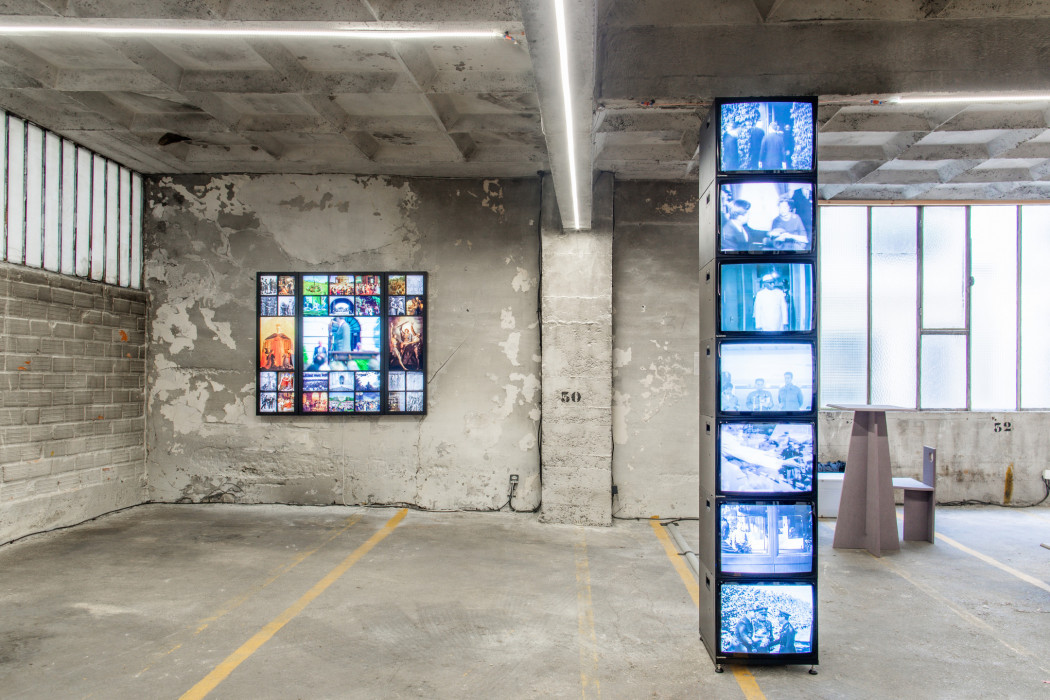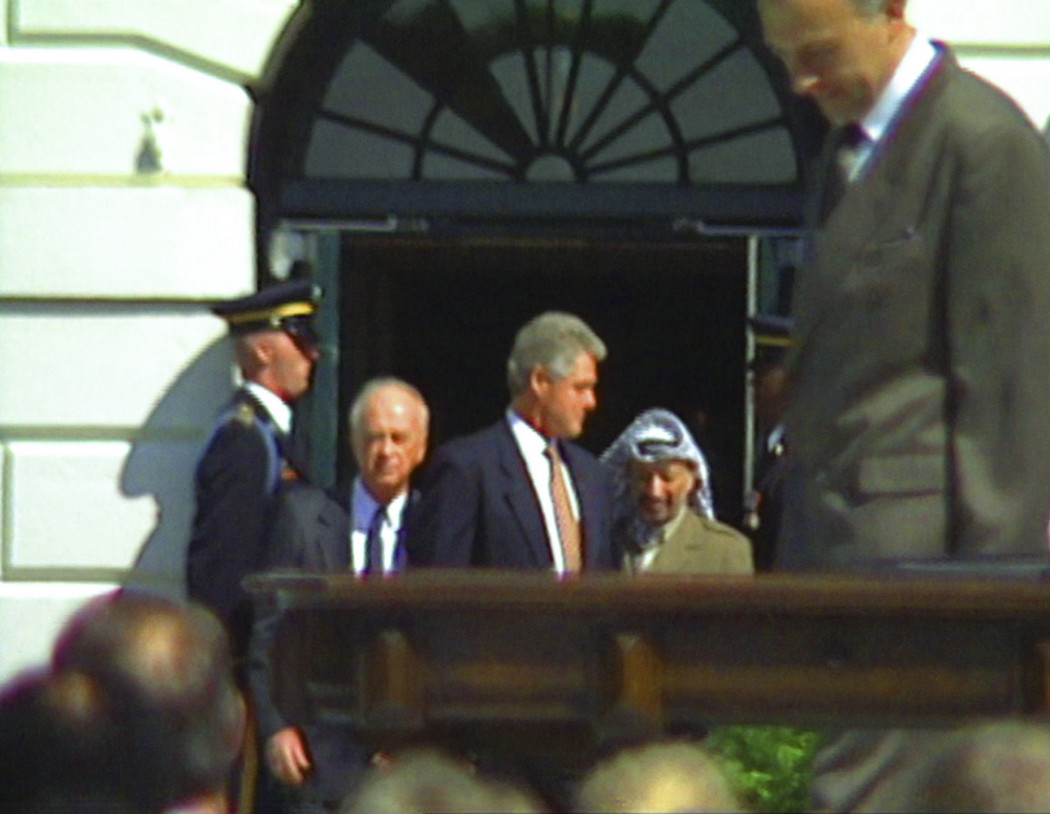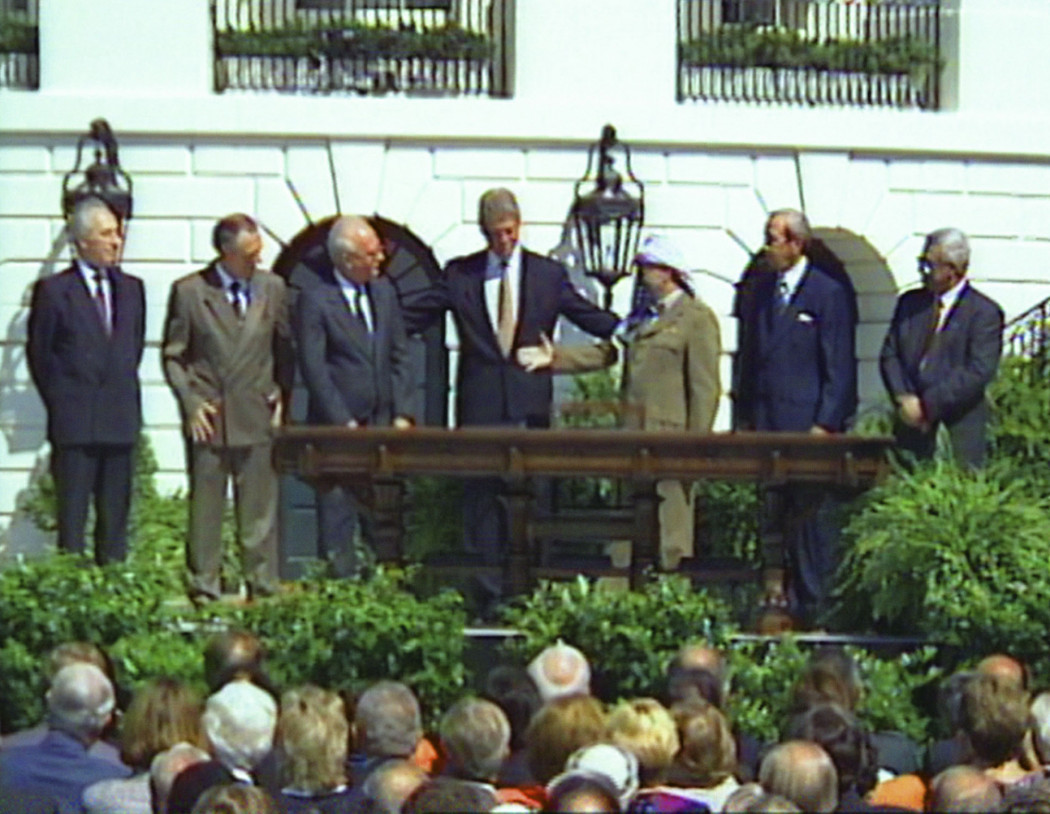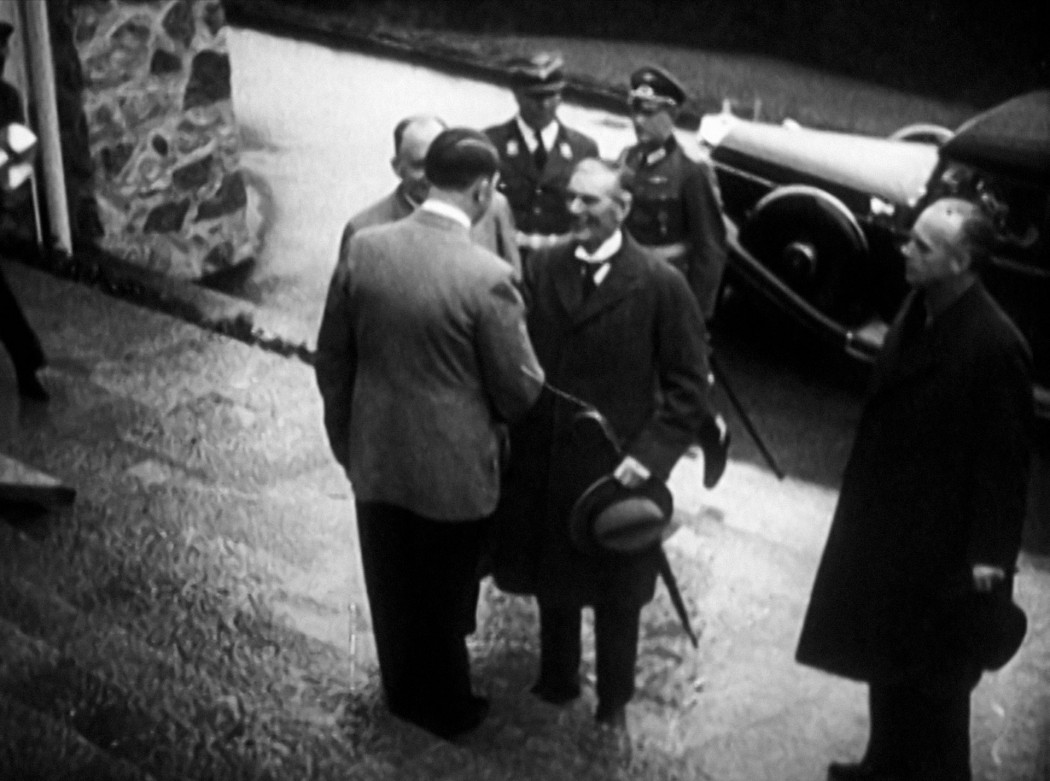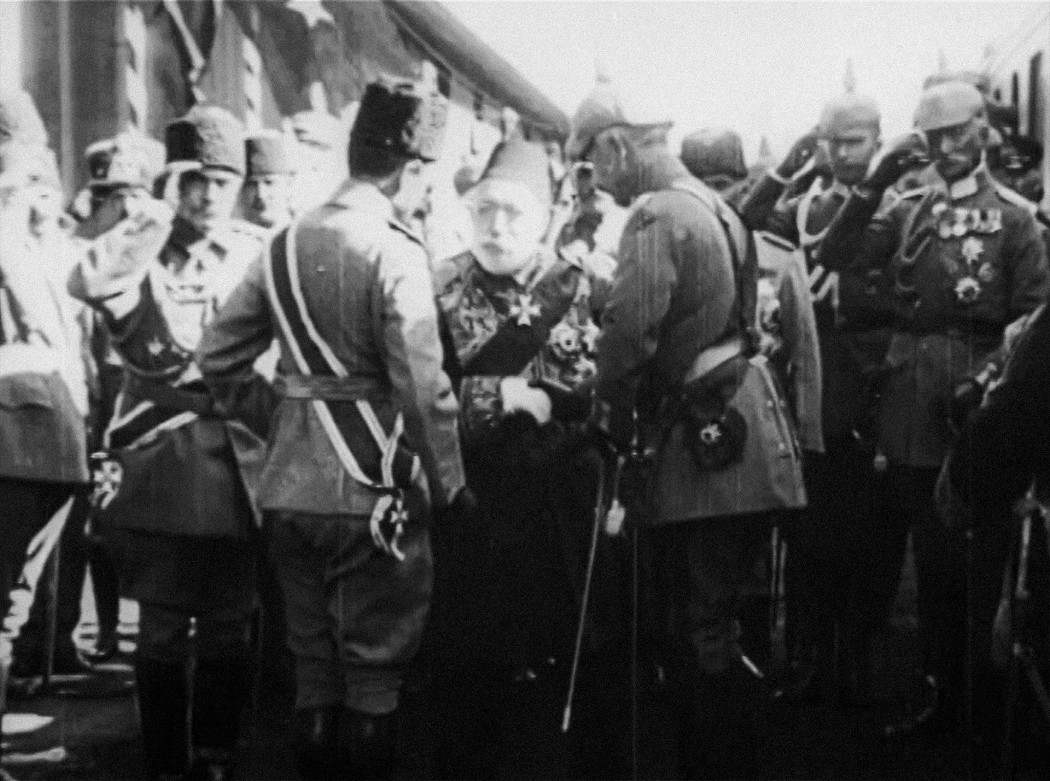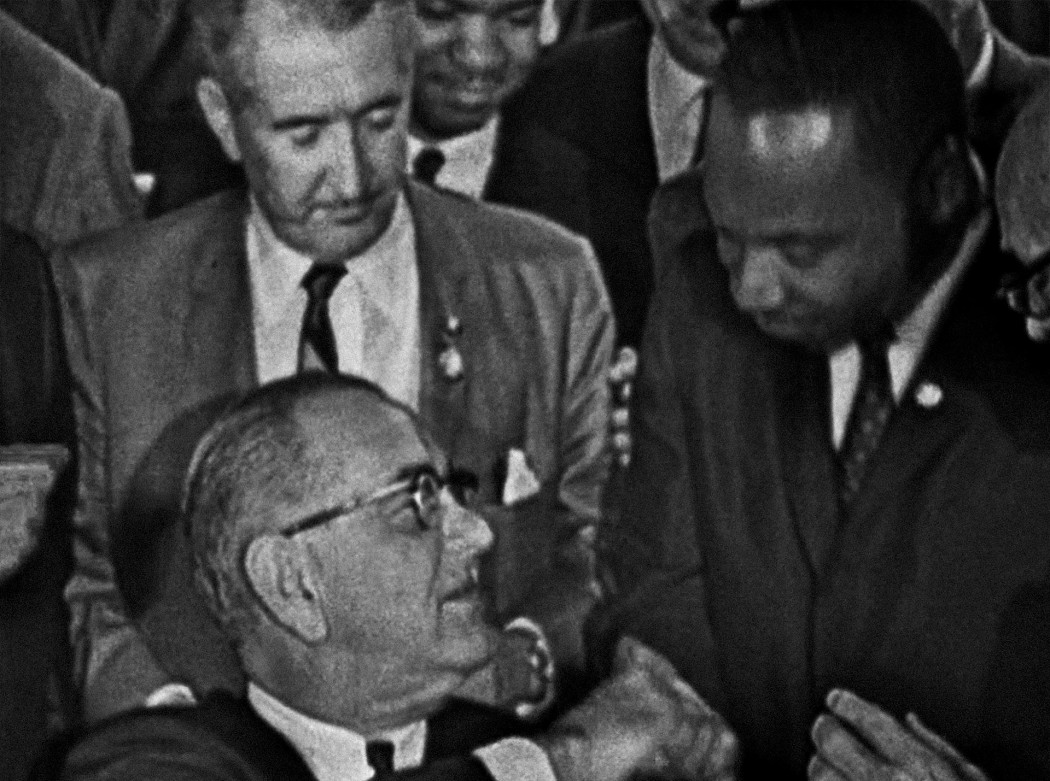The Artist
Jonas Englert’s work reflects social-philosophical phenomena and both political as well as historical narratives and materials through video, diagram, text, and sound. “Declaration of Principles” (2022) reflects the pictorial referentiality of the iconic scene performed by Yasser Arafat, Bill Clinton and Yitzhak Rabin in the course of the Declaration of Principles on Interim Self-Government Arrangements on September 13, 1993 in Washington, D.C. Using both moving and static found footage, the work recontextualizes this political staging in an altar-like polyptych, draws connections, both evident and obscured, and deconstructs the pictorial authenticity of the event. By interrogating the iconography and rhetoric that makes a scene historic, Declaration of Principles questions the singularity and originality not just of this specific scene, but of the image in general.
“Circles I” (2019) draws on historical pre-digital film material and narrates contemporary history as a history of interpersonal encounters. In the multi-channel video installation, public figures connect in chain-like spheres through interpersonal (skin) contact. The video collage dismantles documentary scenes of political encounters against the background of the events of both world wars and beyond into a rhizome of interpersonal contact, and choreographs a dance of multiple circles of touch that interplay with one another. “Circles II” (2019) is the diagrammatic counterpart to “Circles I”, rendering visible the structure of political human touch of “Circles I” based on the individual person, space and time. Both “Circles I” and “Circles II” follow a specific formal structure. In “Circles I” and “Circles II”, the seven circles are closed — the last human to be touched is the one, who gets in contact with the first again like in a round dance — and the circles also correspond with each other. Every circle is connected with the previous as well as with the next.
Key exhibitions of Englert’s work include: Looking for Humanity, Kunstmuseum Magdeburg, Magdeburg (2023); Things I Think I Want, Frankfurter Kunstverein, Frankfurt/M. (2017); Performing Portraiture, Museum of Fine Arts, Boston (2015); Atlas 2013, Bundeskunsthalle, Bonn (2013); and more. His works are part of the collections of the Hirshhorn Museum, Washington, D.C., the Museum of Fine Arts, Boston and the Kunstmuseum Magdeburg. He has created various works, amongst others at the Philharmonisches Staatsorchester Hamburg, the Nationaltheater Mannheim, the Staatsschauspiel Dresden, the Staatstheater Hannover, the Theater Bonn, the Berliner Ensemble and the Schauspiel Frankfurt.
The Gallery
Established in 1995 in Darmstadt, the gallery space moved to Frankfurt am Main in 1998. From the beginning, the emphasis has been on promoting young artists. In particular, the gallery has worked for the promotion of video and new media art by enabling artists to show their work in the necessary settings, as well as having supported publications and productions. Gallery artists have also been invited to take part in the exhibitions of important, international museums, such as (selection) MoMA, New York; SF MoMA, San Francisco; Whitney Museum, New York; Serpentine Gallery, London; ZKM Karlsruhe; Ludwig Museum, Köln; international festivals and biennials. After 20 years of activity, it is the aim of the gallery to contrast historical positions with emerging artists, particularly in photography and video. Today the emphasis is on the dialogue of these young artists with established artists.
Information
Braubachstrasse 9
60311 Frankfurt am Main
Germany
